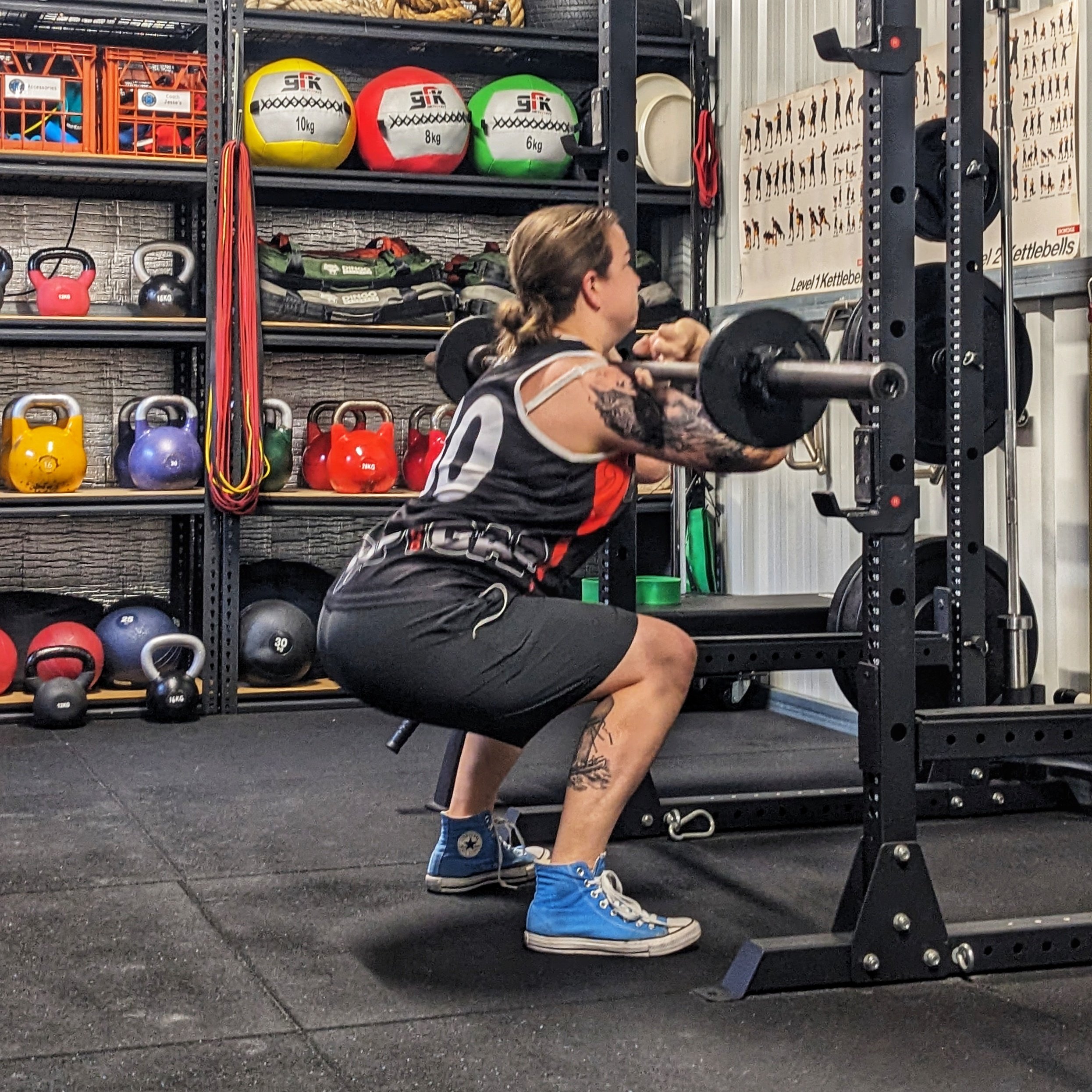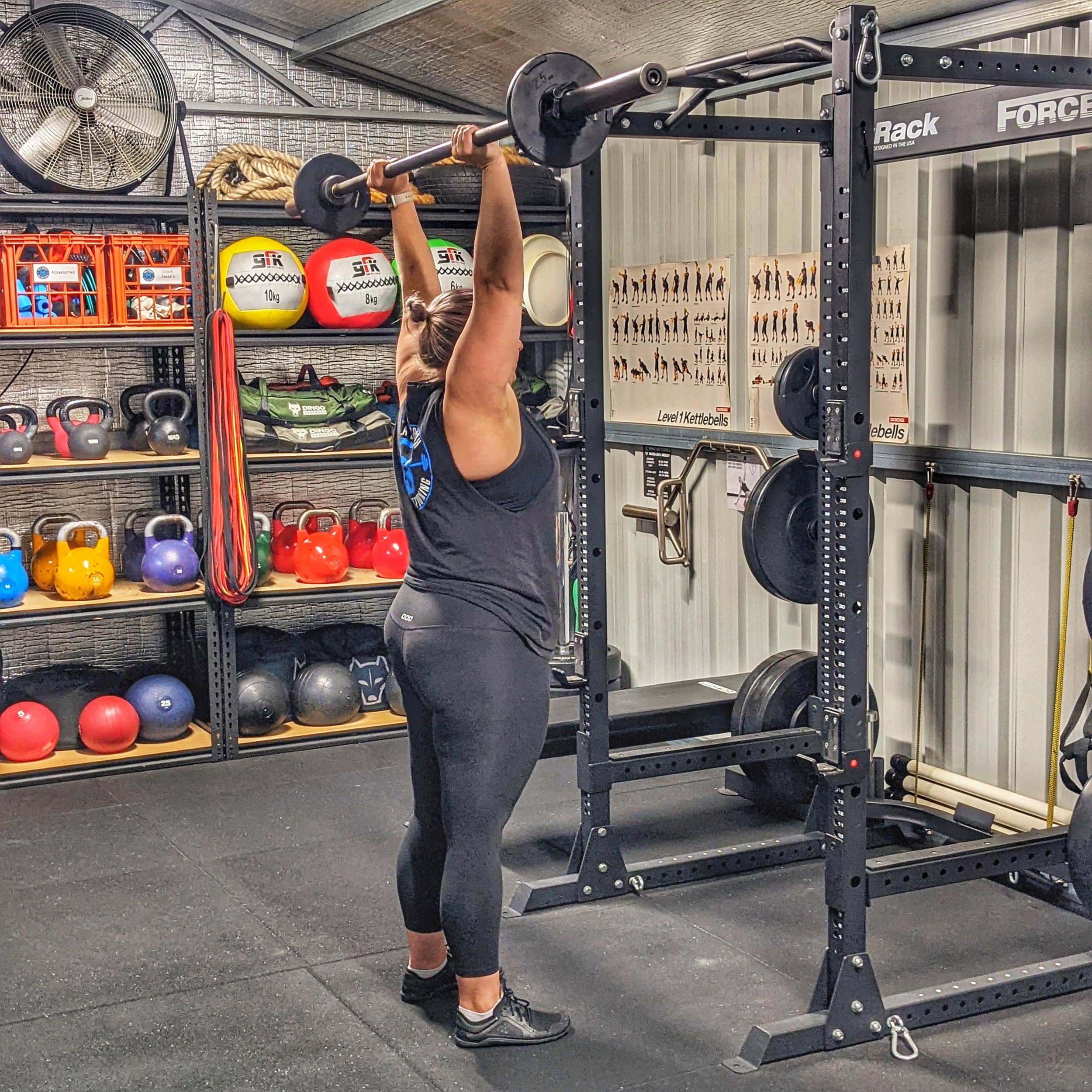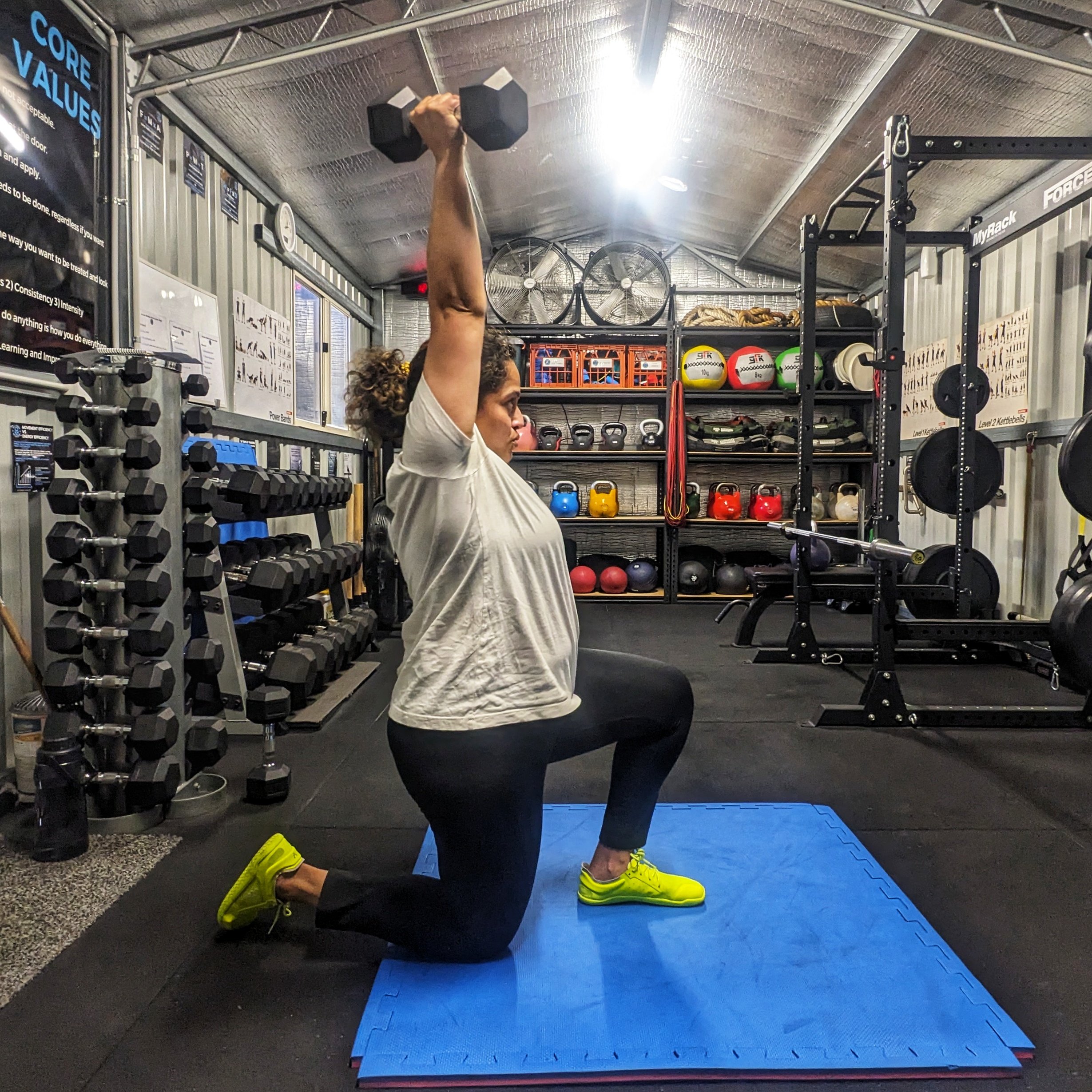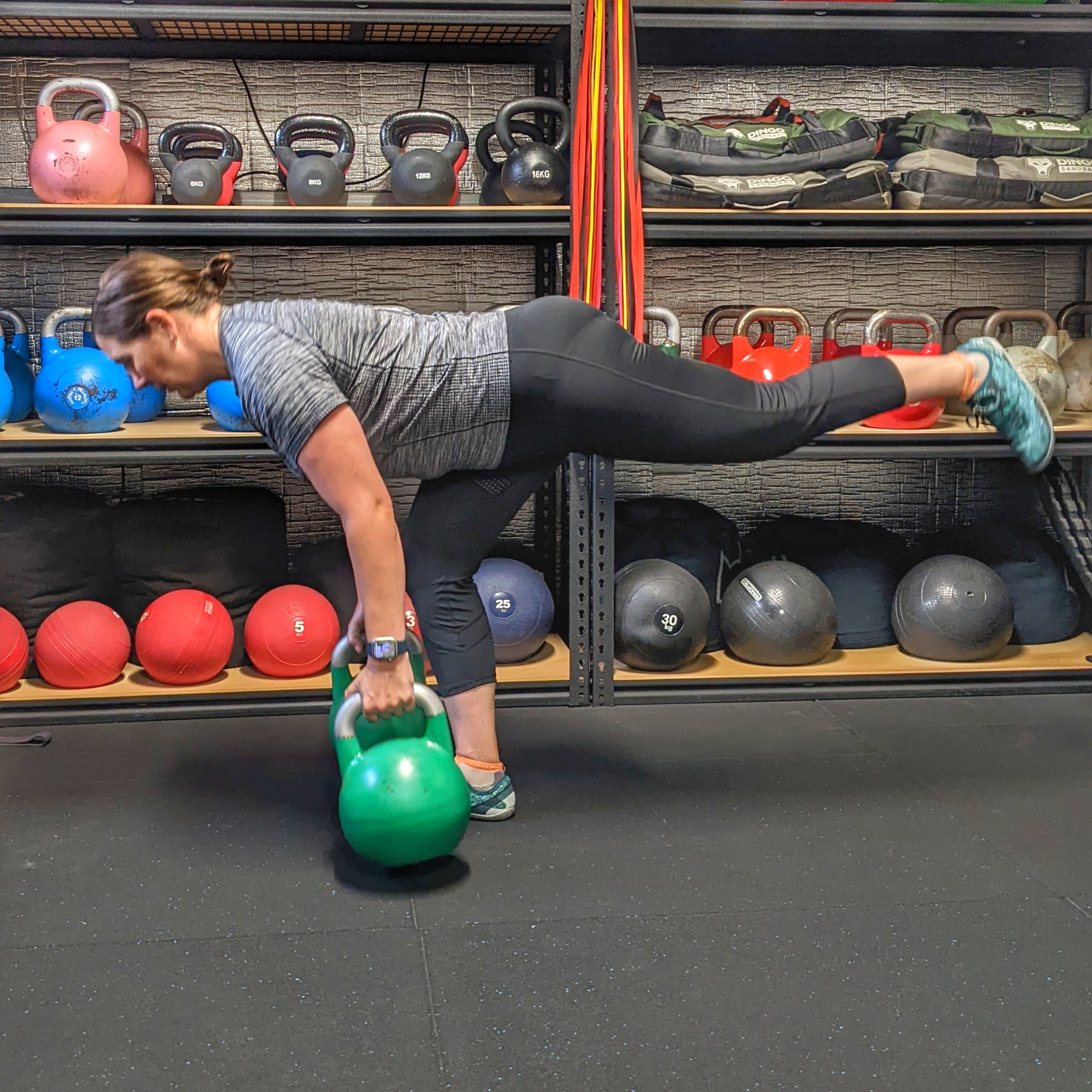Better Than Core Training ENTER: Trunk Training
This is part two of my series on core training. In case you missed it, you can read all about Part 1 first.
Here is the link: What You Need To Know (But Haven’t Been Told) About "Core Training"
So, what’s better than training your ‘core’, you ask?
Understanding that there is a force and part of your body much more robust than it.
ENTER: Trunk Training.
Building your trunk — the bridge and connection between your upper and lower extremities — is the way to maximise force production (more linkage) and minimise body compensation patterns (less leakage).
The video below illustrates what “Core Training” is and the primary focus when engaging in strength training movements.
You now understand that preserving a “neutral spine” is the main focus and priority you need to concentrate on.
Regardless of your goal, the movement pattern, or the strength training tool used.
Whether you are doing a Push, Pull, Hinge, or Squat movement, the goal is the same.
Don’t move from your spine and allow your back to change shape — keep it neutral. As illustrated below.
Neutral spine: 3 Points Of Contact with the sledgehammer.
1= Head, 2 = Upper back, 3 = Lower back/sacrum
Anti-flexion: Must prevent the load from rounding the back.
Anti-flexion: Must stay tight to stop his back from flexing under load.
The objective is the same, whether you use a light load (5.4kg sledgehammer), a moderate weight (BB Front Squat), or the heaviest amount you’ve ever lifted.
Don’t allow your back to change its shape…capiche?
Principles are universal — meaning they apply to all tools, training programs, and methods.
A neutral spine is the safest and strongest position, which is why you should always train with that in mind. It needs to be at the forefront of your thinking, not just an afterthought.
I even produced a podcast dedicated to this topic. You can check that out here;
Ep. 14 - The Only Thing You Should Be Thinking About When Strength Training
Unfortunately, most lifters and gymgoers don’t do that. They train with this inferior, and frankly dangerous, mindset.
“I just want to get ‘it’ (current exercise) over and done with.”
“My goal is to hit my reps as fast as possible.”
“The quicker I get it done, the quicker I can move on.”
If I go faster, the pain (muscular discomfort) doesn’t last as long.”
This is the worst attitude and mentality you could have when you strength train.
Now, while I understand the primitive mindset of avoiding the discomfort (fight or flight mode) that accompanies weight training, it doesn’t help.
It’s highly detrimental and extremely counterproductive. All it does is expose you to crappy technique and a higher risk of injury.
You don’t want either of those things, do you…?
Instead of racing through your reps to get them out of the way, try to make every rep as valuable as possible. That way you won’t have to do as many, as you don’t accumulate ‘junk volume’ (reps for the sake of reps).
Try this approach below instead.
The point I’m trying (very hard) to convey is that your “core” consists of way more than just your superficial washboard abs.
You have muscles on the front, back, and sides of your body that you need to train. Especially if you wish to provide the most amount of stability, security, and strength to your spine.
Remember: ANTI movements = Resist motion
Every exercise has a “right” and a “wrong” way of being performed. I hope that you learn which exercise does what, and how to prevent your body from doing it incorrectly.
That way, you have a very vivid and clear WHY that underpins all the movements you do and each exercise in your strength training program.
Whether you are local to my private strength training facility here in Bertram, south of Perth, or elsewhere. The rules apply in all states, territories, and countries.
Strength knows no boundaries and the iron never lies.
Do things correctly, with the right muscle groups involved, and you’ll be rewarded. With greater strength, more muscle, and superior conditioning…with less attrition, breakdown of your body, and wear and tear on your joints.
Do things incorrectly, and you’ll suffer the repercussions of poor movement, compensation patterns (that will need fixing, now or later), and a laundry list of possible injuries.
All because you don’t know how to stabilise your spine and use your trunk to great effect.
Quit doing sit-ups and crunches, and learn how to link your entire body together!
There are countless options available to you. My students get exposed to The Big 4 Movement Patterns for this reason.
To strengthen their entire body — from top to bottom, left to right, and front to back.
BB Goodmorning = Anti-flexion
BB Military Press = Anti-extension
DB Half-kneeling OH Press = Anti-lateral Flexion
Double KB Single-leg RDL = Anti-rotation
You must take the time to understand each movement, what you are trying to do (and avoid), and what your body will try to do to cut corners and cheat.
Because if you give it a chance to do so, it will happily accept, at your peril.
Make no mistake, your body doesn’t want to do things correctly. It wants to choose the path of least resistance and find a way to use the least amount of energy.
It is up to you to stop that from happening.
This is the difference between movement efficiency and energy efficiency. I’ll briefly explain what that is in a moment.
But first, understand this, because it’s important!
You ALWAYS want the highest level of movement quality — no matter how much energy it costs the body — as detailed below.
When doing your upper body work, make sure your trunk and lower body are still.
When doing your lower body movements, ensure your trunk and upper body are not moving.
When working your entire body, verify that everything is working together — more linkage and less leakage.
These are some core concepts to take away and put into play. Identify the joints that are (and aren’t) involved, the muscle groups responsible for the task, and get them to do their job.
You send a signal, or set of instructions, from your brain to your body. Make sure they are crystal clear with no ambiguity, and the message gets through.
This becomes apparent when you demonstrate your movements and perform your exercises. Your technique is the picture that you have painted with a specific brush.
Crisp-looking lines, bright colours, and HD images show you have the right brush and correct set of colours all working towards a common picture or finished product.
If your technique is poor or your form is sketchy, it’s because you don’t know what you’re doing. This comes down to a lack of knowledge.
OR
If you do have the underpinning knowledge, you don’t know how to transfer it from your brain to your body. This comes from a lack of body awareness.
Coaching and hands-on instruction solve both of these problems.
These are things I can 100% help you with. Come in for an Initial Consultation, and I’ll show you the way.
You aren’t the first person who’s come to me not knowing what your core is, where it is, and how to use it to full effect. And you won’t be the last, I’m sure of it.
My goal in these two articles is to remove the blindfold of core training. To reveal a more effective way to go about strengthening one of the most integral pieces of the human body, the middle.
Without a solid middle, the extremities can not showcase their potential and demonstrate its full capacity, as the power source is weak, and/or leaking.
Learn to brace. Learn how to keep a neutral spine. Learn how to apply this skill to all movements. Do that, and you’ll be free to build strength and get into any position safely, effectively, and confidently.
Trunk training is the vehicle you need to get in. And practice, over and over again until you can demonstrate complete proficiency across the board.
Using every piece of strength training equipment available to you, in every domain, and position imaginable. Starting with the Big 4: Push, Pull, Hinge, and Squat.
Discipline in every single movement — weighted or unweighted — is what gives you the freedom to lift heavy, fast, and for high-reps. These are the variables that produce the best results.
But you must start where you are, not where you want to be, and build from there.
The true power of trunk training is earned, never given.
Unlock yours!










